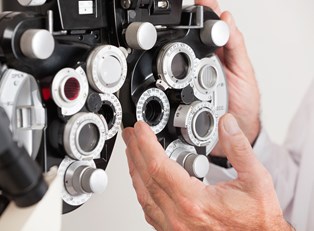Age-related macular degeneration (AMD) is an eye condition that impairs vision but does not end in total blindness. Whether it is the dry or more serious wet form of this eye abnormality, classic symptoms include difficulty in reading. Macular degeneration is caused by damage to a person’s deteriorated or deteriorating retina, although many people nevertheless continue with their daily lives and may even drive in some instances. Here are five terms you should familiarize yourself with to discuss this condition with your eye doctor
- Macula
This small, highly sensitive portion of the retina is where macular degeneration strikes. Over time, the retina's ability to produce a sharp, clear vision of any object directly ahead of the eye diminishes, leaving a restricted field of vision.
- Dry Macular Degeneration
In the dry form of this condition, a gradual deterioration of cellular debris called drusen often results in a gradual lessening of vision that leads to the blurring of central vision. These drusen become identifiable in the form of individual or clustered formations of small, yellow-white spots. Located in the back of the eye, they are only seen by specially designed lenses. Dry macular degeneration makes up more than 90% of the reported cases of AMD, and while there’s no prescribed treatment for it at this time, most patients resume near normal daily activities as they undergo careful monitoring by their ophthalmologists.
- Wet Macular Degeneration
In the more serious wet form of macular degeneration, blood vessels grow from the choroid that lies behind the retina. Consequently, the growing blood vessels can cause a detachment of the retina. The good news is that treatment is available for wet AMD, and sometimes a reversal of the growing blood vessels becomes possible. While only affecting 10% of the people diagnosed with AMD, wet macular degeneration makes up more than 60% of the people reporting vision loss of any kind.
- Fluorescein Angiogram
This procedure used to identify AMD consists of an injection filled with fluorescent fluid dye that is administered into a patient's arm. As the dye passes through the blood vessels, photographs being taken show any possible leaking vessels or other visual abnormalities. Complications may result as some people have allergic reactions, resulting in nausea or other side effects.
- Coherence Tomography
In this procedure used to identify dry macular degeneration, light waves obtain high-resolution images of light-penetrable tissue matter. After the pupils widen through use of dilation drops, painless light images can show any possible drusen deposits beneath the retina.




